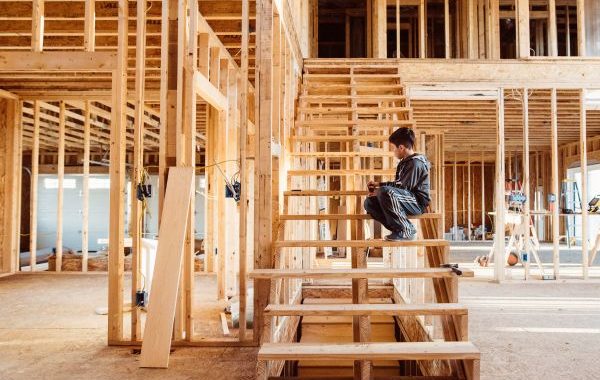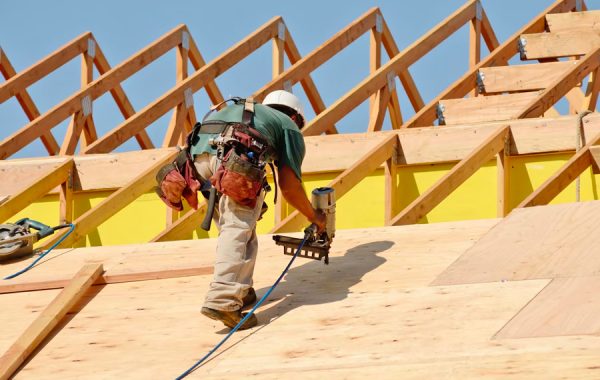
Empowering Communities through Innovative Construction
Innovation in construction has the potential to be a powerful tool for empowering communities. Beyond just erecting buildings, innovative construction methods and technologies can reshape the fabric of communities, fostering economic growth, sustainability, and community engagement. In this article, we will explore how innovative construction practices can play a pivotal role in transforming communities for the better.
Innovative Construction Methods
Traditional construction methods have their limitations in terms of efficiency, cost-effectiveness, and sustainability. However, the advent of innovative construction methods is changing the game. Techniques such as 3D printing, modular construction, and the use of sustainable materials are revolutionizing the industry. These methods offer faster construction timelines, reduced waste, and enhanced structural integrity, ultimately benefiting the communities where these projects take place.
Imagine a community where houses are 3D-printed in a matter of days, drastically reducing the time and cost involved in construction. This not only provides affordable housing solutions but also creates job opportunities for the local population. Innovative construction methods open doors to creativity, enabling architects and builders to design unique structures that reflect the character of the community.
Community Engagement
Empowering communities through construction goes beyond just physical structures. It involves active community participation and engagement throughout the project’s lifecycle. When communities are actively involved in the planning and decision-making process, it leads to better project outcomes and a sense of ownership. Community input can result in designs that meet the specific needs and preferences of the people who will inhabit those spaces.
Successful examples of community-engaged construction projects can be found worldwide. For instance, a community-led effort to build a neighborhood park not only provides a recreational space but also fosters a sense of unity and pride among residents. When communities come together to shape their environments, they become stronger and more resilient.
Sustainability and Environmental Impact
Innovative construction practices also play a vital role in promoting sustainability and reducing the environmental impact of construction. The use of eco-friendly materials, energy-efficient designs, and renewable energy sources can significantly decrease the carbon footprint of construction projects.
Communities benefit from these sustainable practices in multiple ways. Reduced energy consumption in buildings leads to lower utility bills for residents. Green spaces and sustainable infrastructure contribute to improved air and water quality. The long-term environmental benefits translate into a healthier and more livable community.
Economic Benefits
Empowering communities through innovative construction extends to the economic realm as well. These projects create job opportunities, stimulate local economies, and enhance property values. When construction projects innovate and embrace modern methods, they often require a skilled workforce, leading to increased employment opportunities for local residents.
Additionally, innovative construction projects can act as catalysts for broader economic development. The construction of a new transportation hub, for example, can connect previously isolated communities, opening up new business opportunities and driving economic growth in the region.
Challenges and Solutions
While innovative construction has numerous benefits, it is not without its challenges. These may include initial cost barriers, regulatory hurdles, and the need for specialized training. However, by fostering collaboration between communities, governments, and construction companies, these challenges can be overcome.
Challenges:
• Initial Cost Barriers: Innovative construction methods often come with higher initial costs compared to traditional methods. Investing in new technologies, sustainable materials, and skilled labor can be a significant financial hurdle for communities, especially those with limited resources.
• Regulatory Hurdles: The construction industry is subject to various regulations and building codes, which may not always accommodate or adapt quickly to innovative techniques. Navigating complex regulatory processes can be time-consuming and costly.
• Specialized Training: Innovative construction methods often require specialized skills and training for both workers and project managers. Communities may face challenges in finding and developing a workforce with the necessary expertise.
Solutions:
• Financial Assistance: Communities can seek financial assistance from government grants, subsidies, or private sector partnerships to offset initial costs. Incentives for sustainable and innovative construction practices can encourage investment in these technologies.
• Advocacy and Collaboration: Communities can advocate for updates to local building codes and regulations to accommodate innovative construction methods. Collaborating with government agencies and industry associations can help streamline approval processes and reduce regulatory barriers.
• Education and Training Programs: Establishing education and training programs at the community level can address the skill gap. Local vocational schools, apprenticeship programs, and partnerships with construction companies can provide residents with the skills needed for innovative construction projects.
• Public-Private Partnerships: Collaborative efforts between communities, governments, and private construction companies can help overcome challenges. Public-private partnerships can provide resources, expertise, and funding for innovative projects while ensuring that they align with community needs and goals.
• Knowledge Sharing: Communities can learn from successful case studies and best practices in innovative construction from around the world. This knowledge sharing can help communities avoid common pitfalls and adopt strategies that have proven effective elsewhere.
• Long-Term Planning: Communities should develop long-term plans that incorporate innovative construction as a core element. By integrating innovation into their vision for the future, communities can secure funding and resources over time, making it easier to overcome initial cost barriers.
Technology and Smart Infrastructure
One of the key drivers of innovation in construction is the integration of technology and smart infrastructure. In today’s interconnected world, communities can harness the power of data and automation to make their environments safer, more efficient, and more responsive to their needs. Smart cities are a prime example of how technology can transform urban living.
Imagine a community with smart streetlights that adjust their brightness based on real-time weather conditions, reducing energy consumption. Smart waste management systems optimize garbage collection routes, reducing costs and environmental impact. These technologies not only make life more convenient for residents but also contribute to resource conservation and cost savings.
Furthermore, technology-driven construction methods like Building Information Modeling (BIM) enable precise planning and coordination of projects. This reduces construction errors, minimizes delays, and ensures that projects stay on budget. As a result, communities benefit from faster completion times and reduced disruption.
Resilience and Disaster Preparedness
Innovative construction also plays a crucial role in increasing a community’s resilience to natural disasters and climate change. Communities in disaster-prone areas can benefit greatly from innovative construction methods that prioritize safety and durability.
For instance, earthquake-resistant building designs and materials can save lives and prevent widespread destruction. Flood-resistant infrastructure, such as elevated buildings and flood barriers, can protect communities from rising sea levels and extreme weather events. By investing in disaster-resilient construction, communities can reduce the long-term costs associated with recovery and rebuilding.
Education and Skill Development
To fully leverage innovative construction methods, communities need access to education and skill development programs. These programs can empower local residents to participate in construction projects, whether as skilled workers, project managers, or entrepreneurs.
Training initiatives can provide individuals with valuable skills that are in demand in the construction industry. Apprenticeships, vocational training, and certification programs can create pathways to well-paying jobs within the construction sector. This not only benefits individuals and their families but also strengthens the local workforce.
Additionally, promoting entrepreneurship within the construction industry can foster economic growth at the community level. Encouraging small businesses and startups in construction-related fields can lead to job creation and a more diversified local economy.
Conclusion
In conclusion, empowering communities through innovative construction is not just about building structures; it’s about shaping the future. By embracing innovative construction methods, fostering community engagement, promoting sustainability, and addressing challenges, communities can transform themselves into vibrant, resilient, and forward-thinking places to live and work.
Through the integration of technology, the pursuit of smart infrastructure, disaster preparedness, education, and skill development, communities can take control of their destinies. They can build a foundation for a brighter future, one where innovation in construction serves as a catalyst for positive change, improving the lives of all residents and setting a shining example for generations to come.


